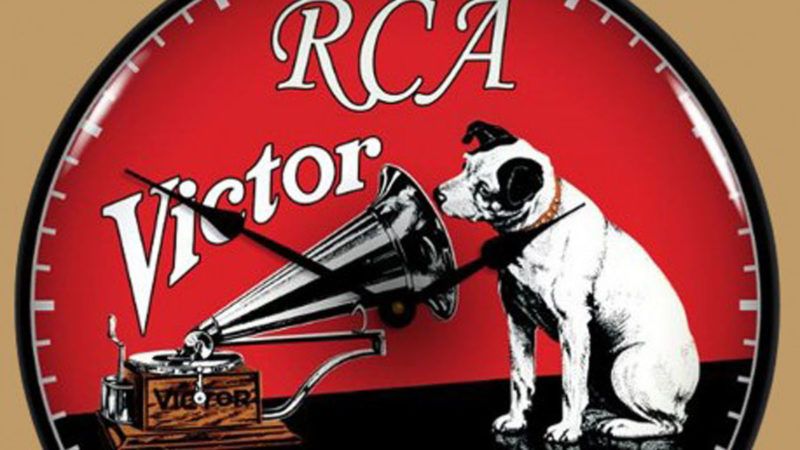How the Government Created RCA
A century before its threats against TikTok, Washington pried a different media company out of foreign hands.

There is a precedent for the White House's moves against TikTok, the Chinese-owned video app that President Donald Trump first threatened to ban and now wants to push into the arms of an American buyer. A century ago, worried about the power another foreign-owned company might wield over a different communications medium, the U.S. government found a way to shift that power into American businessmen's hands.
The story wasn't completely analogous to the current saga. Unlike the present occupant of the Oval Office, Woodrow Wilson didn't declare that he had the unilateral presidential authority to prohibit a platform for people's speech. Nor did he suggest that the U.S. Treasury should grab a "very substantial portion" of the sale price. And it remains to be seen whether Trump's efforts will have as long-lasting an effect as the Wilson administration's scheme, whose impact reverberated for decades.
But there certainly are some similarities between the situations.
The tale begins in the aftermath of World War I. During the fighting, the U.S. Navy had nationalized the American airwaves: It took control of 53 point-to-point wireless stations and shut down virtually all the others. After the armistice, Congress considered a proposal to make this system permanent. Both President Wilson and Navy Secretary Josephus Daniels backed the bill, but it soon became clear that the legislature wasn't going to pass it.
Yet Washington still wanted to ensure that foreigners would not control America's long-distance wireless stations or the technologies those stations used. In particular, they wanted to do something about the American branch of the U.K.-based Marconi Company, which was ready to retake its old stations from before the war. "Fears of Marconi monopoly and fears of British imperialism fed on each other," Hugh Aitken recounts in The Continuous Wave: Technology and American Radio, 1900–1932. Both fears, he added, "were, if not baseless, at least exaggerated": Britain's economy was in bad shape, the Marconi network no longer held a formidable technological lead, and the British government's relationship with Marconi was not "as harmonious as outsiders, particularly Americans, assumed." Still, U.S. officials felt they'd be safer with the company in American hands—and those American hands were happy to receive the goods.

And so, as Susan Douglas put it in Inventing American Broadcasting, 1899–1922, Naval officers "began orchestrating the formation of an all-American company that would buy out American Marconi and remove, once and for all, foreign interests from America's wireless communications networks." Those efforts bore fruit in October 1919, when a new company owned by General Electric took over Marconi's American stations and patents. The newborn operation was called the Radio Corporation of America—better known by its initials, RCA.
Meanwhile, an overlapping process was underway. During the Progressive Era, several American tech companies had developed a strategy of deliberately acquiring patents to block competition. Washington imposed a moratorium on radio patents after America entered the European conflict; in the wake of the war, the government encouraged the corporations that controlled key radio technologies to cross-license their patents. General Electric, Westinghouse, AT&T, and United Fruit ended up forming a patent pool, the members of which all held stock in RCA. This allowed innovation to proceed with less hindrance within those businesses, but with more hindrance outside them; the companies had basically used the government's intellectual-property regulations to create a cartel.
With time, RCA would enjoy a privileged position not just in radio manufacturing but in radio broadcasting. The Radio Act of 1927 allowed regulators to impose much tighter restrictions on who could use the spectrum, and the ensuing years saw many small operations driven off the air. RCA was among the companies that came out ahead. Four radio networks dominated broadcasting in the 1930s: CBS, Mutual, the NBC Red Network, and the NBC Blue Network. The latter two were both owned by RCA.
The same government that issued those patents and broadcast licenses sometimes intervened to limit the power of the beast it had built. An antitrust suit in 1932 forced GE and Westinghouse to divest themselves of their RCA stock, breaking up what The New York Times called "the great radio patent combine." (The divorce from GE was not permanent: In 1986, General Electric purchased RCA.) In the 1940s, following further antitrust activity, the NBC Blue Network was spun off as ABC—a new, non-RCA broadcaster.
But the feds didn't stop helping their war baby. In 1945, as FM radio was just starting to emerge, the Federal Communications Commission abruptly reassigned FM's section of the spectrum to another fledgling technology, television—a move that instantly rendered every FM receiver obsolete. The beneficiaries included RCA, which didn't control the FM patent but had been investing heavily in TV.
It was an egregious gift to the industry incumbents. But Washington's most egregious gift to RCA will always be the time it created the company in the first place. Whatever winds up happening with TikTok, let's hope that's one chapter of history that doesn't repeat itself.
__________
CORRECTION: This article originally described RCA as the "chief force" pushing for the reassignment of the FM band. The corporate lobbying was led by CBS, DuMont, Motorola, and several other companies heavily invested in AM radio broadcasting or manufacturing.



Show Comments (20)